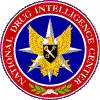
Northern California High Intensity Drug Trafficking Area Drug Market Analysis
June 2007
Drug Trafficking Organizations
Mexican DTOs based in the Northern California HIDTA region dominate illicit drug transportation and wholesale distribution in the area as well as distribution from the area to drug markets throughout the country. They also cultivate very large quantities of cannabis in the region and control methamphetamine and marijuana production operations in the Central Valley of California. These organizations, based largely on familial ties, typically consist of members residing in California, Mexico, and other cities throughout the United States. Leaders within these families are based in cities in the Northern California HIDTA region such as Redwood City, East Palo Alto, and San Jose as well as in southern California. Mexican DTOs typically smuggle drugs from Mexico through U.S. ports of entry (POEs) in Calexico, San Ysidro, and Otay Mesa, California, and transport them to the Northern California HIDTA region.
|
Six Charged in Bay Area MDMA Smuggling Ring In August 2006 DEA and U.S. Immigration and Customs Enforcement (ICE) officials announced the indictment of six individuals involved in an Asian MDMA smuggling ring based in San Francisco. The investigation began in 2001 when Belgian Federal Police alerted U.S. Customs officials that a piano, in which more than 40 kilograms of MDMA were concealed, had been shipped from Germany to the San Francisco International Airport. During the course of the investigation, law enforcement officers determined that MDMA shipments were secreted in shipments of automobile transmissions, European pianos, and leather sofas. This Asian organization generated more than $3 million in drug proceeds and used some of the money to purchase expensive homes in Oakland, Hillsborough, and Burlingame, California. Source: Drug Enforcement Administration San Francisco press release, August 10, 2006. |
Figure 2. Traffickers constructed this sandbag bridge to transport drugs via vehicles across the U.S.-Mexico border.

United States Border Patrol
Asian DTOs and criminal groups, particularly Vietnamese groups, are major illicit drug traffickers in the Northern California HIDTA region. The drug trafficking threat that they pose to the area is increasing but is lower than that posed by Mexican DTOs. Asian drug traffickers transport primarily high-potency marijuana, commonly known as BC Bud, from British Columbia, Canada, and MDMA from Canada for distribution in the California HIDTA region. They are also the primary MDMA distributors in many areas throughout the region. Asian groups also cultivate cannabis indoors in the HIDTA region and produce marijuana for local distribution. Cannabis cultivation by Asian DTOs in the HIDTA region is increasing, particularly at indoor locations. Asian DTOs typically restrict involvement in their drug trafficking operations to individuals of similar ethnicity and familial affiliation. Many Asian DTOs and criminal groups distribute illicit drugs in the area; however, Vietnamese groups are predominant.
|
Northern Operation Imperial Emperor In February 2007 DEA officials announced the culmination of Operation Imperial Emperor, a multijurisdictional investigation that targeted an international Mexican drug trafficking and money laundering organization that had ties to the San Francisco Bay area in addition to other areas of California, Arizona, Illinois, and New York. This organization maintained distribution cells in Northern California that transported drugs from Mexico across the U.S.-Mexico border to San Francisco for further distribution in the city and to cities throughout the United States. Overall, this investigation resulted in the arrest of more than 400 individuals nationwide, including the top leaders of the organization and the seizure of approximately $45.2 million in U.S. currency, 27,229 pounds of marijuana, 9,512 pounds of cocaine, 705 pounds of powder methamphetamine, 227 pounds of ice methamphetamine, and 11 pounds of heroin. The investigation has also resulted in the forfeiture of $6.1 million in property and assets as well as approximately 100 weapons and 94 vehicles. Source: Drug Enforcement Administration San Francisco press release, February 28, 2007. |
Figure 3. Almost $3.5 million of the more than $45 million in cash seized as part of Operation Imperial Emperor.

Drug Enforcement Administration
Street gangs, prison gangs, and outlaw motorcycle gangs (OMGs) pose a major challenge to law enforcement agencies within the Northern California HIDTA region as they are extremely violent in establishing or maintaining control of their drug trafficking activities. Hispanic street gangs, primarily affiliates of Sureņos and Norteņos gangs, are involved in midlevel and retail-level distribution of methamphetamine, marijuana, cocaine, and heroin. African American street gang members, primarily affiliates of Bloods and Crips, distribute crack cocaine and marijuana at the retail level in the HIDTA region. Prison gangs, such as Border Brothers and Kumi Nation, are involved in methamphetamine, crack cocaine, and marijuana midlevel and retail-level distribution. Members of OMGs, most notably Hells Angels Motorcycle Club (HAMC), distribute midlevel and retail-level quantities of powder cocaine, methamphetamine, and marijuana. African American street gangs, prison gangs, and OMGs are supplied by Mexican distribution cells.
|
Sureņos and Norteņos Street Gangs Sureņos and Norteņos are affiliations of Hispanic street gangs that initially formed in the California Department of Corrections by members who wanted to ally themselves with incarcerated street gang members from other areas. Hispanic street gangs in southern California (Bakersfield and points south) were known as Sureņos street gangs, while those from central and northern California (north of Bakersfield) were known as Norteņos street gangs. Hispanic street gangs operating in the Northern California HIDTA region are typically affiliated with Sureņos and Norteņos gang associations. The two groups are adversaries both inside and outside the prison system. |